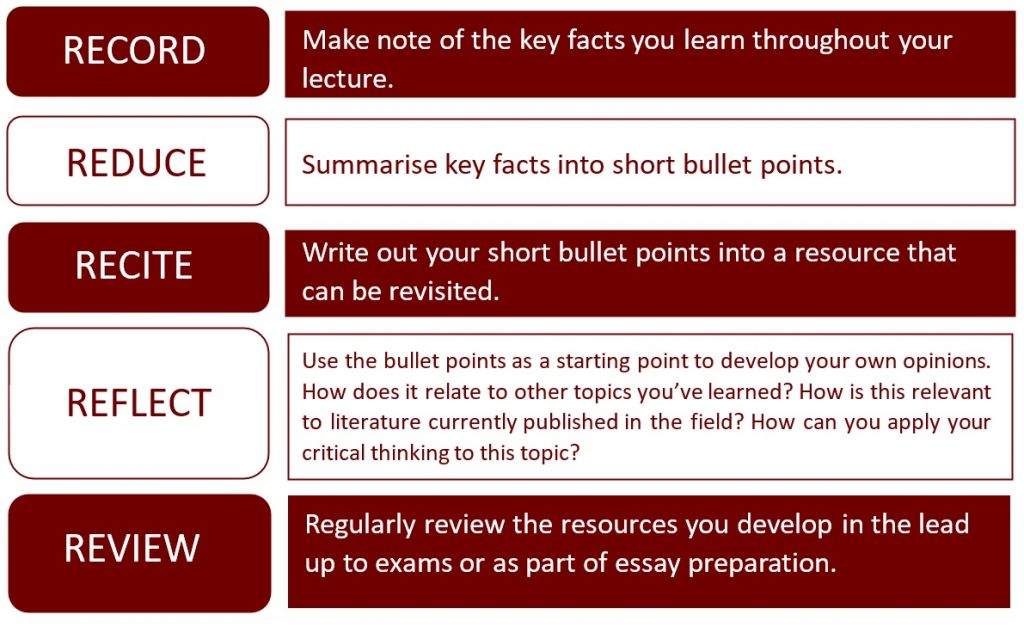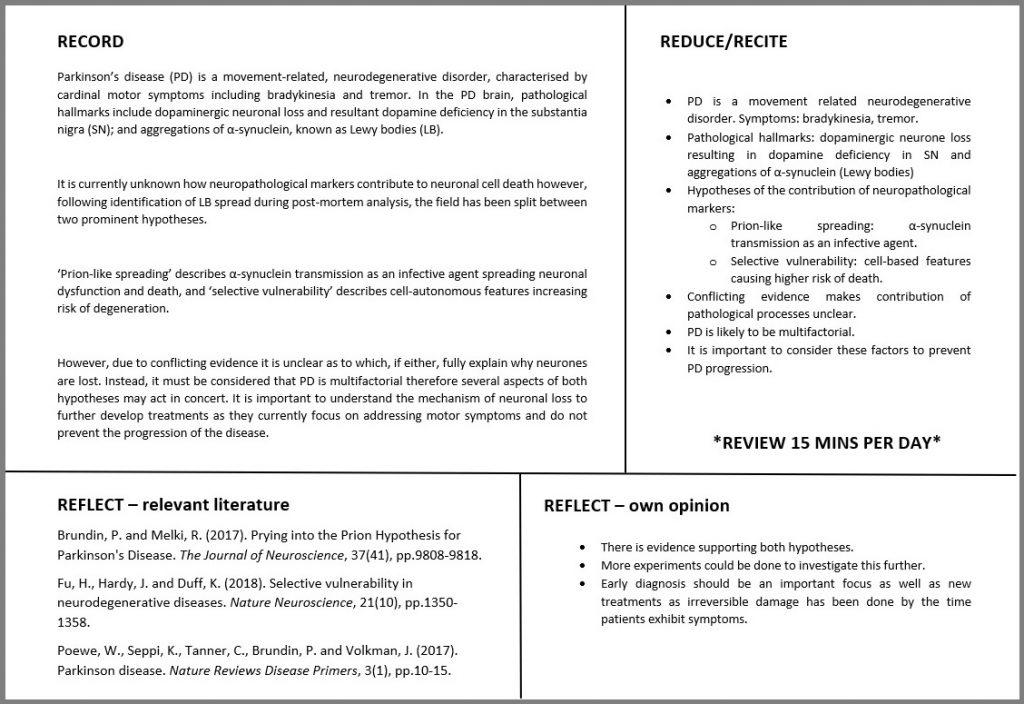 By Molly Jackson, Translational Health Sciences student and Bristol Futures Advocate
By Molly Jackson, Translational Health Sciences student and Bristol Futures Advocate
The way we take notes is a big influence on how well we learn, and this differs greatly between individuals. As students we are often told to make notes throughout our lectures and use them to answer exam questions and provide essays with references to both literature written by experts in the field and our own opinions. This is often overwhelming, especially when we are provided with a high volume of information in a lecture and do not know where to start with how to record this information into notes.
After struggling in my first and second years of university with extensive pages of long notes piled on my desk never to be revisited, I began to wonder if there was a method out there to make use of notes as well as just making them. Following some extensive googling and asking fellow students on their approach to notetaking, I decided to try the Cornell method which breaks down notetaking into 5 easy stages…

I found that using this approach breaks down complicated topics into bitesize pieces that can be used to build back into a bigger picture with wider reading and your own opinions. The best thing about using this method is that, as we all learn in different ways, this approach can be tailored to the individual and gives you a chance to be creative. For example, for the visual learners, the recite and review stage could be carried out in the form of a diagram or mind map, and for auditory learners, in the form of a song. It has also been scientifically proven that this technique is highly effective in a range of disciplines!*

The only question left to ask is what is what kind of learner are you and how can you build this into the 5Rs approach to develop achieve note taking success?
*Some examples of the evidence:
-
Evans B and Shively C. Using the Cornell Note-Taking System Can Help Eighth Grade Students Alleviate the Impact of Interruptions While Reading at Home. Journal of Inquiry and Action in Education. 2019;10:1-35.
-
Donohoo J. Learning How to Learn: Cornell Notes as an Example. Journal of Adolescent & Adult Literacy. 2010;54:224-227.
-
Hayati A and Jalilifar A. The Impact of Note-taking Strategies on Listening Comprehension of EFL Learners. English Language Teaching. 2009;2.
-
Quintus L, Borr M, Duffield S, Napoleon L and Welch A. The impact of the Cornell note-taking method on students’ performance in a high school family and consumer sciences class. Family and Consumer Sciences Research Journal. 2012;30:27-38.
